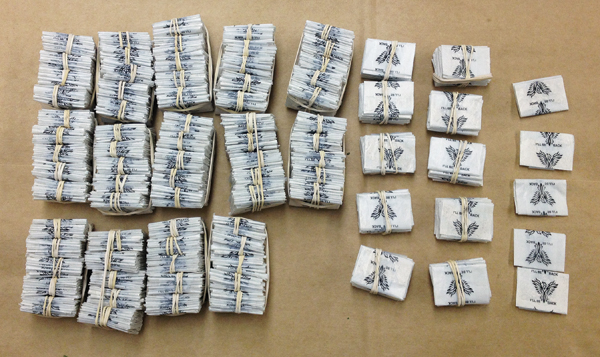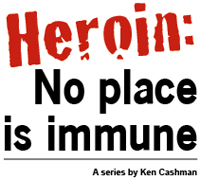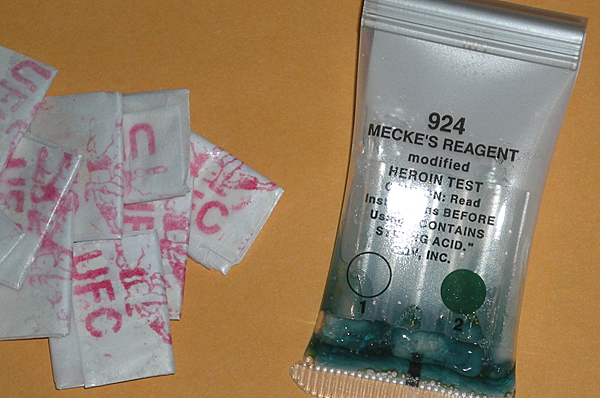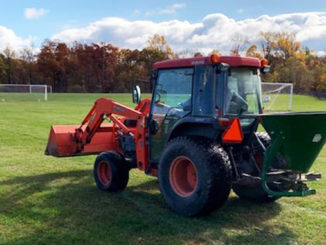
 You don’t hear about heroin use in Cornwall. But if it’s happening in other places, it must be happening here. Over the next four weeks, we will describe the heroin epidemic and what’s being done to stop it.
You don’t hear about heroin use in Cornwall. But if it’s happening in other places, it must be happening here. Over the next four weeks, we will describe the heroin epidemic and what’s being done to stop it.
Heroin is in the headlines. It’s all over. In Massachusetts last week, Gov. Deval Patrick declared heroin overdoses a public health emergency.
A few days later, the state Senate in Albany passed a bill to let trained practitioners use a drug that may prevent deaths from overdosing.
And on the same day, District Attorney David Hoovler in Goshen held a “Superintendents Summit,” where he discussed the current heroin crisis with school officials. “You can be addicted after just three doses,” he told them. “That’s what all the mental health people are saying.”
Countywide, the number of drug arrests jumped from 40 in the first three months of 2013 to 81 in the first quarter of the current year. But the trend doesn’t apply to Cornwall. There have been no heroin arrests in the Village, and only five (occurring through traffic stops) in the last two years in the Town. Of course, it’s possible that heroin users from Cornwall have been apprehended in other communities. If that happened, the information wouldn’t get reported back to the police in their home town. One piece of sad news that did get back to the local police is that a 21-year-old Cornwall man died from a heroin overdose in the City of Newburgh.
It’s safe to assume that Cornwall is not immune to the problem. “Heroin knows no social, ethnic, economic or racial bounds,” District Attorney Hoovler said during a March 27 interview. He’s seen it hook teenagers as well as people in their sixties.
Neal Miller, Cornwall’s superintendent of schools, makes a similar observation. “Whether you see it or not,” he says, “you have to have an understanding that it exists.”
As proof of that assertion, Mr. Miller recalls an assignment he had in a small farming community in Idaho. During an assembly, the high school principal advised students that police dogs would be going through the halls sniffing for drugs hidden in lockers. As the assembly progressed, students left their seats, and assumedly went to their lockers to get rid of the evidence. The mission was successful. The principal wasn’t looking for arrests. He was trying to get the drugs out of the school.

That was 20 years ago. At the time, Mr. Miller was the principal of the middle school. He reasons that if it was happening in a rural community in the 1990s, it must be happening here. “As educated, logical people,” he says, “we know we’re not free.”
And while the problem is not new, it’s become suddenly worse. For a while people were snorting heroin, a narcotics detective in New York City says. Now they’re shooting it again.
In Orange County, District Attorney Hoovler has made narcotics enforcement a priority. Like many people, he attributes the sudden popularity of the drug to the increased use of opiate-based pain killers. When patients can’t renew their prescriptions, he says, some of them are turning to heroin as an alternative.
Painkillers led Stu Green (not his real name) to a heroin addiction that almost killed him. He will be featured in next week’s issue. As a young teenager (in a different community), he found it easy to get prescription painkillers in school. Kids would get them by raiding their family’s medicine cabinet. By the age of 18, he was snorting oxycodone every day. “It bridged the gap to heroin,” he admitted.
Lynn Imperato, Cornwall’s high school principal, understands the attraction of prescription pain killers. “Kids know that heroin is bad,” she says, “but with painkillers they have a false sense of security. They believe that if a doctor prescribed something it can’t hurt them.”
If painkillers lead them to heroin, there are dangers besides the drug’s addictive quality. Users quickly develop a tolerance to the drug. They need more of it to get high, and the highs get shorter and are followed by a period of sickness.
Stu Green, for example, quickly went from a fraction of a bag to shooting five or more bags at a time. And not all the heroin he bought was the same strength. Dealers would cut it with other products to increase their profits.
On a purchasing trip to Paterson, N.J., Stu couldn’t find his usual source. He bought from someone else, and injected the customary amount. This time the reaction was different. Within minutes, he was unconscious in his car.
As the dangers have increased, the efforts to combat heroin usage have escalated. The district attorney has met with union members and police PBAs, and he intends to have conferences with Town and Village leaders. “It’s easy to be addicted,” he said. “We want to push people to treatment before we have to arrest them.”
Cornwall Central High School has a 15-session course on drug abuse. And Principal Imperato says that the security staff and faculty have a real pulse on what’s happening with the student body. School officials get many referrals from people who are concerned that someone else has a problem and may be using drugs.
But the response to the heroin problem will be addressed in the third article in the series. The topic of this introductory piece can be summarized by two observations. “There’s more heroin than you think [David Hoovler]” and “Nobody’s immune. It’s unfortunate but it’s true [Lynn Imperato].”



